Wilmington Street, Showing Cotton Merchants, Raleigh, N.C.
This week Flashback Friday mingles among the cotton merchants in the 300 block of S. Wilmington Street. The image in this beautifully tinted postcard depicts an era in Raleigh’s history which is now long lost.
No message this week.
The prominent four story building seen on the left in our featured postcard view this week is the Commercial and Farmers Bank, founded in 1891, and reorganized around 1910 as the Commercial National Bank. Adjacent to it is the office and warehouse of Len Adams, wholesale grocers. Farther up the street is the rear of Raleigh’s City Market and Metropolitan Hall.
On the east side of Wilmington St. are buildings occupied by cotton merchants, wholesale grocers, restaurateurs, feed and seed stores, purveyors of agricultural implements and other businesses associated with the city market.
Below is a photo of the same view taken in 1946. The rear of Hudson-Belk department store is on the left. The tall building is the former Commercial National Bank, erected in 1912.
On the right are many of the same buildings seen in the postcard view. Job P. Wyatt & Sons, seedsmen and farm implements, occupied the large brick building at this time; the city market, cotton merchants and wholesale grocers, however, were long gone.
Raleigh’s Cotton Merchant District
The 200 and 300 blocks of  S. Wilmington had been a part of the bustling ‘Market Square’ area of Raleigh since antebellum times. By the third quarter of the 19th century buyers and sellers of cotton were firmly established in the 300 block.
- State Archives of North Carolina photo
This early 1900s postcard view shows cotton sellers clustered in the 300 block of S. Wilmington St.
This view of the 200 block of S. Wilmington St. shows the mercantile activity associated with the city market.
This photo of ‘cotton row’ was taken in the 1920s.
In 1912 the Commercial National Bank erected an elegant, 11-story neo-gothic ‘skyscraper’ at the corner of Martin and Wilmington Streets, replacing its earlier 19th century building. This photo was taken soon after construction began. (Look at all that Belgian block pavement!) Len Adams’ store can be seen at the left.
Below are two photos showing the cotton merchants conducting business on the street in front of the Commercial National Bank circa 1913.
These photos capture the last glimpse of an era that was soon to pass from Raleigh’s downtown business scene.
The Commercial National Bank was wantonly demolished in 1991 by its then occupant, First Citizen’s Bank; the PNC building stands on the site today. And, sadly, the few remaining buildings in this once bustling mercantile district will soon fall to the wrecker’s ball.
Our Flashback Friday ‘Litho-Chrome’ postcard this week was printed by the American News Co. of New York, NY.
American News Co. Â 1864-1957Â
119 Nassau Street, New York, NYFounded in 1864, this firm became a major distributor of books, magazines, newspapers, comic books and postcards exclusively through their national network of more than 300 affiliated news agencies. Most of their cards were printed in Leipzig, Dresden and Berlin, but they switched to American and French printers during WW I. Their closure in 1957 led to great difficulties in distribution, putting many small publishers out of business as well.
Litho-Chrome — A German made card printed in blue collotype over red and yellow lithographic spatter. (A collotype is a continuous tone image printed from a glass plate.) Their individual colors are sharp and tend to stand out. They are drawn more toward more solid tones than to texture. Blue often dominates the pallet as it is used instead of black. This hue is sometimes so heavy that it renders a scene highly unnatural. This was one of their earliest types of cards that were originally issued without prefixes.
Prefix A 10000-12200 beginning in 1907
Prefix B 10000-15000 continuing in 1907
There are also five digit numbered cards with a B prefix that were printed in halftone.
Prefix C 1-15000 continuing in 1907
Prefix D 1-12000 beginning in 1910
Prefix E 5000-7000 beginning in 1912
“Flashback Friday†is a weekly feature of Goodnight, Raleigh! in which we showcase vintage postcards depicting our historic capital city. We hope you enjoy this week end treat!
Â

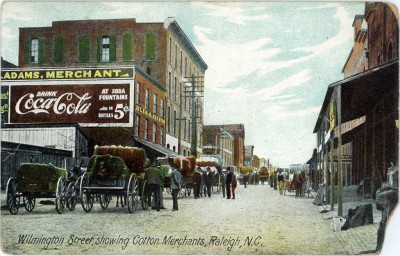
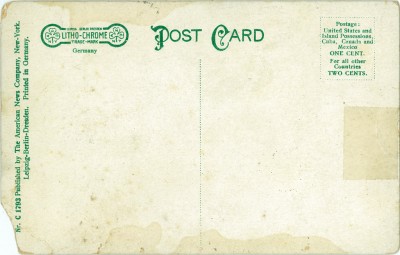
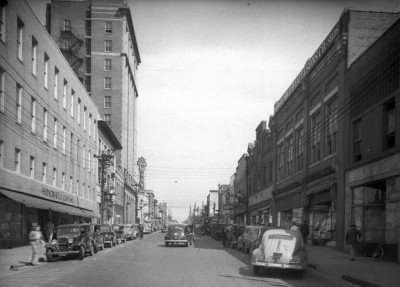
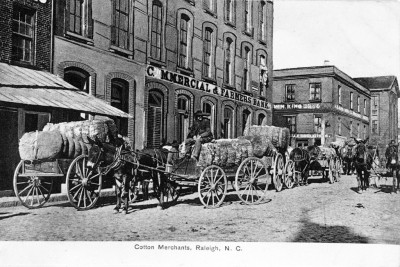
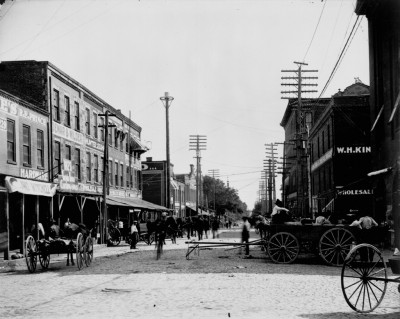
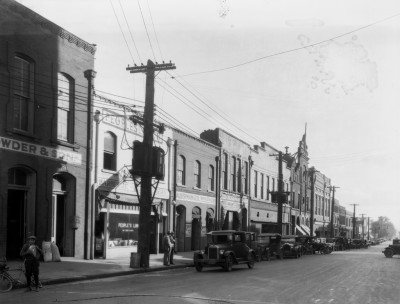
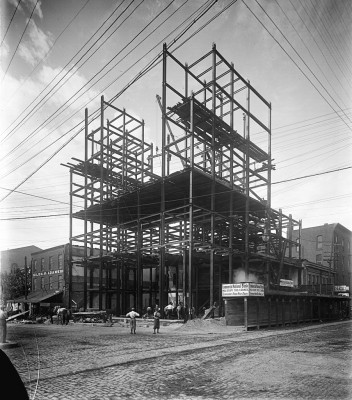
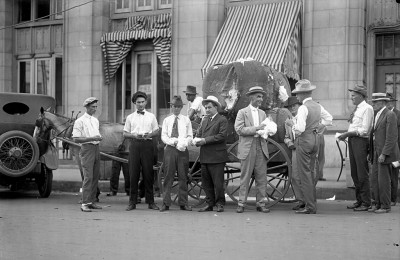


 Sign up for the Newsletter
Sign up for the Newsletter
03/30/2014
I remember watching the bank building being imploded in 1991 — got a video of it somewhere. Always sad to see a beautiful building go….